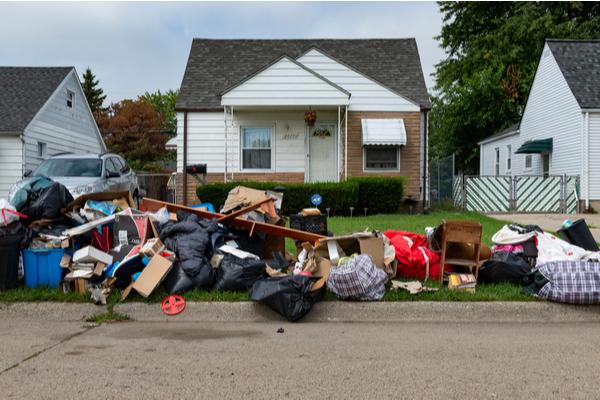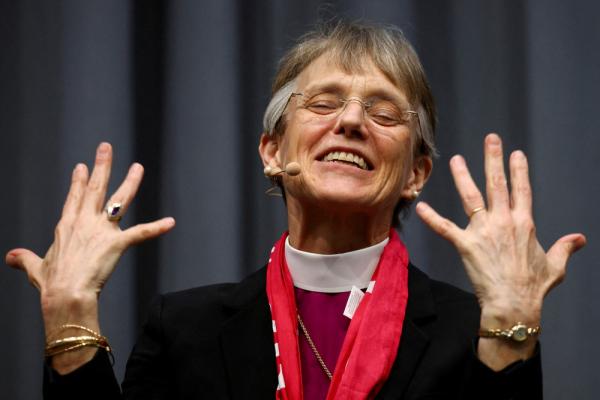Suppose the total annual income of a family composed of a mother, father, great-aunt, and two children living outside of a major metropolitan area came to $32,000 in 2019. Although their income might be significantly lower than the average among similarly-sized households in the region, the U.S. wouldn’t have included them in the official count of American families living in poverty.
Families of their size and composition only would have been considered impoverished in 2019 if their earnings fell below $31,275. Since this hypothetical family earned $725 more, they wouldn’t have been considered poor.
Scenarios like this one found among real American families are behind new advocacy to change how the U.S. government defines poverty. In the weeks following Election Day, economists, analysts and a faith-based social action group have joined efforts in the call for President-elect Joe Biden to use the power of the Oval Office.
“It will take a big public push, but I think real improvements can be made by the next administration via executive action,” Shawn Fremstad, a senior policy fellow at the Center for Economic and Policy Research, told Sojourners.
New president, new policy
Reminding the transition team of commitments President-elect Joe Biden made to address economic instability, the Poor People’s Campaign has included changes in the way the U.S. defines poverty in a set of 14 policy proposals it wants the Biden-Harris administration to pursue during its first 100 days in office.
“These priorities are constitutionally consistent, morally defensible and economically sane,” Rev. Dr. William J. Barber II, co-chair of the Poor People’s Campaign and president of Repairers of the Breach said in a Dec. 7 statement. “This is a reconstruction and restoration agenda that can transform and repair the lives of Black, White, Brown, Indigenous, Asian, gay, straight, working, unemployed, essential, disabled, young, old, urban, rural, poor and low wealth people throughout this nation. These policy priorities for the first hundred days lift from the bottom and take seriously the cost of inequality.”
Economic Policy Institute research director Josh Bivens also called for the new administration to focus on economic policy that supports what some consider the country’s moral obligation. Shortly before the election, Bivens co-authored a blog post with the leaders of the Poor People's Campaign, writing, “There are discrete, ambitious policy changes that could happen quickly and would be transformative, especially for the 140 million poor and low-income people who were facing multiple pandemics even before COVID-19.”
In a September 2020 speech, Biden recalled the economic challenges his family experienced and committed to restoring dignity for the poor.
“We are going to talk about our obligations to one another — how we benefit when we help one another,” Biden told attendees of the Poor People’s Campaign’s Moral Monday Mass Assembly. “Ending poverty will not just be an aspiration. It will be a change to build an economy that rewards everyone.”
Measuring poverty
After President Lyndon B. Johnson declared a “War on Poverty” in 1964, the U.S. adopted a working definition of poverty, which featured poverty thresholds based on the cost of a minimum food diet in 1963 multiplied by three.
By 1978, the Office of Management and Budget established this definition as the official poverty measure (OPM) for federal agencies to use for statistical purposes. Agencies compare a household’s gross income to the poverty thresholds, which vary by the size and the ages of the family members. People living in households where the gross income falls below the threshold are considered to be living in poverty.
Even though the OPM is updated annually to account for inflation, it still assumes that households spend a third of their income on groceries and it doesn’t account for how living expenses have changed relative to the cost of food — including cost for housing, childcare, transportation, health care, utilities, or debt, says Shailly Gupta Barnes, policy director for the Kairos Center for Religions, Rights, and Social Justice and the Poor People’s Campaign.
“The official poverty measure is based on income and food expense data from 1955, but it has not been updated in meaningful ways since that time,” Barnes said during a November 2020 Kairos Center policy briefing on the OPM featuring a panel of experts. “In the weeks and months ahead, it will be important to set a new standard on poverty so the Biden-Harris Administration and the 117th Congress can take up their promise and commitment to provide for the general welfare.”
One criticism Barnes, her panelists, and other analysts have of the OPM is that it doesn’t take into account the regional differences in cost of living, such as housing costs.
“There are a lot more people who are poor, but living above the poverty line,” Anne Price, president of the Insight Center, an economic justice advocacy group based in Oakland, Calif., said at the briefing. “The measure that we use is so antiquated, not just in how it calculates a household budget and what's left out, but also because it doesn't reflect real, contemporary lived experience, different household types, or regional differences.”
For example, in 2019 the OPM poverty threshold for a family of three with two children under age 18 was $20,598. But a single parent with two young children living in the San Francisco Bay Area needs to earn $98,000 a year to cover the basics, Price said.
34 million vs. 140 million
In 2011, the Census Bureau and the Bureau of Labor Statistics partnered to create a more holistic poverty measure. The resulting Supplemental Poverty Measure (SPM) includes the cost of food, clothing, shelter, and utilities, as well as regional differences in the cost of housing in its poverty thresholds. SPM also factors in the value of a family's non-cash benefits as well as taxes and costs related to work, health care, and child support.
As a result SPM, considers slightly more families as living in poverty than OPM. For example in 2019, based on the OPM, a family of two adults and two children earning less than $25,926 would be considered poor. However, under 2019 SPM guidelines, families earning less than $28,881 (and renting in an area with average housing costs) would be considered impoverished, Fremstad wrote.
Calculations derived from the OPM put the U.S. at a 10.5 percent poverty rate with 34 million people in America living in poverty, but the Kairos Center says the actual number of people experiencing poverty is more like 140 million, with a national rate of 43.5 percent — and that was before the pandemic. To reach this figure, the Kairos Center includes families who earn anything less than 200 percent of the SPM.
Though these additional 106 million Americans are more often recognized as “low income,” they are “just one emergency, traffic violation or health care crisis away from being poor and most likely will fall under that poverty threshold and into poverty over the course of the year,” Barnes wrote in a Kairos Center analysis.
“Instead of getting sliced and diced, the 140 million number allows people to see themselves in the same boat and build coalitions across class, race, gender and across this poverty line that keeps them apart,” Fremstad said at the briefing.
Despite these limitations, OPM thresholds are still used to track poverty over time, compare poverty across different demographic groups, and some agencies use them as the starting point for determining eligibility for federal assistance programs.
“A measure that is too low results in eligibility standards that leave out significant numbers of people who are in need of such programs and it also means these programs are not funded to meet that need,” Barnes said. “When poverty numbers persist or even rise, it is easy to make the case that these programs or people who are still poor failed, rather than seeing these under-investments as the real failures.”
Moving the poverty line
The Poor People’s Campaign wants the updated poverty measure to consider race, age, familial status, ability, geography, and sexual orientation and to establish a new basis for eligibility, appropriations, and resource allocations, according to a policy framework it released on Dec. 7. And Fremstad seems to back them up.
In a September 2020 report for the Century Foundation, Fremstad recommended that the next administration immediately discontinue the OPM and replace it with a threshold that falls between 50 and 60 percent of the median post-tax income, a formula that the the United Kingdom, the European Union, and international policy think tank OECD advances.
Fremstad told Sojourners that a poverty line set equal to 60 percent of post-tax income that also includes a household’s non-cash benefits would have been about $44,000 for a family of four in 2018, compared with the OPM that same year of $25,554 for a family of four.
Even at almost twice the current OPM, Fremstad said the higher poverty line he proposes still isn’t enough for what people need to live.
Fremstad noted in his report that in addition to food, clothing, shelter, and utilities, the supplemental poverty threshold should include transportation costs as well as the cost of essential goods and services like home computers, internet services, appliances, basic entertainment, household supplies, basic entertainment, education, and expenses that help people with a disability gain equal access. Fremstad says policymakers should be talking about what it takes to live with dignity.
“When Dr. Martin Luther King called for a basic income, he was really thinking about poverty and what it takes to live — not just meet your very basic needs — but to live and fully participate in our society,” Fremstad said. “That is how we should be designing poverty programs, but we’ve really just lost that way of thinking about poverty. It’s been reduced to this measurement.”
Addressing years of criticisms about the OPM and SPM, a 2013 Insight Center report included a synopsis of strategies experts and agencies have proposed over the years as alternative ways the U.S. government could set the federal poverty line. These concepts may provide a more nuanced view with lenses that include race and gender and could assist policy makers in developing poverty measures and policies that create opportunity and greater economic security to more Americans, Insight Center said in the report.
The will to change?
Given that economic instability has proven to be a significant contributing factor among the more than 300,000 COVID-19-related deaths in the U.S., the Poor People’s Campaign and poverty experts say the level of economic deprivation revealed by the pandemic should be the catalyst that gets the Biden-Harris administration and the new Congress working on setting alternative measure for poverty for federal programs.
Even before the pandemic, lawmakers were aware of the need to reset poverty measures for modern times. In 2019, U.S. Rep. Alexandria Ocasio-Cortez (D-NY) introduced a bill that would require agencies to develop a poverty line for a federal program that provides funds to improve impoverished communities along the same lines as Fremstad’s recommendations.
Since it was the Office of Management and Budget — which is controlled by the executive branch — that established the OPM as an official measure, congressional action may not be required to reset the OPM, Fremstad told Sojourners.
“Since the executive branch had the power to create and change the measure in the past, it must continue to have the power to change the measure in future,” Fremstad said.
But it may be difficult to start a conversation that acknowledges more Americans are falling behind economically through no fault of their own. Historically, both Democrats and Republicans have resisted efforts to reevaluate how we measure poverty in the U.S., Fremstad explained.
“The Johnson administration didn't want to update it, because they were worried it would make the ‘War on Poverty’ not look effective enough, and then the Nixon administration wanted to really freeze that measure in place,” Fremstad said. “They made the current poverty line an official statistic and we’ve stuck with that for 57 years, only updating it for changes in inflation and not to keep pace with changes in costs of living and how we live.”
But in the midst of a pandemic that is revealing the juxtaposition of economic realities and moral truths about the country, faith leaders resolve to make their policy priorities heard.
“They are a prescription to the diseases of systemic racism, poverty, ecological devastation, militarism and the distorted moral narrative of Christian nationalism that are plaguing the nation,” Rev. Dr. Liz Theoharis, co-chair of the Poor People’s Campaign and director of the Kairos Center, said in a statement.
“Poor and low-income people, moral leaders and all people of conscience are going to keep organizing until they are realized.”
Got something to say about what you're reading? We value your feedback!





